Tag: African American
Trial: African American Newspapers, Series 2

Until March 15, the Library has trial access to Readex’s African American Newspapers, Series 2, which includes 75 newly available newspapers and complements Series 1, which the Library acquired last year.
“While African American Newspapers, Series 1, was created from the extensive newspaper archives of the Wisconsin Historical Society, Kansas State Historical Society, and the Library of Congress, Series 2 was created from the remarkable holdings of the American Antiquarian Society, Center for Research Libraries, the Library of Congress, and New York Public Library. Selections were guided by James Danky, editor of the monumental African-American Newspapers and Periodicals: A National Bibliography.”
Primary Sources: Federal Surveillance of African Americans, 1920-1984
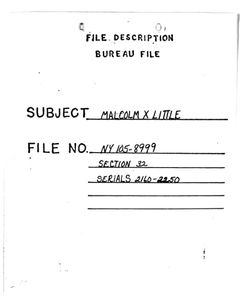 “Throughout the twentieth century Black Americans of all political persuasions were subject to federal scrutiny, harassment, and prosecution. The Federal Bureau of Investigation enlisted black “confidential special informants” to infiltrate a variety of organizations. Hundreds of documents in this collection were originated by such operatives. The reports provide a wealth of detail on “Negro” radicals and their organizations. In addition to infiltration, the FBI contributed to the infringement of First Amendment freedoms by making its agents a constant visible presence at radical rallies and meetings. This archive is based on original microfilm.”
“Throughout the twentieth century Black Americans of all political persuasions were subject to federal scrutiny, harassment, and prosecution. The Federal Bureau of Investigation enlisted black “confidential special informants” to infiltrate a variety of organizations. Hundreds of documents in this collection were originated by such operatives. The reports provide a wealth of detail on “Negro” radicals and their organizations. In addition to infiltration, the FBI contributed to the infringement of First Amendment freedoms by making its agents a constant visible presence at radical rallies and meetings. This archive is based on original microfilm.”
It contains the FBI files on A. Philip Randolph, Adam Clayton Powell, the Atlanta Child Murders, the Black Panther Party-North Carolina, the Committee for Public Justice, Elijah Muhammed, the Highlander Folk School, the Ku Klux Klan Murder of Viola Liuzzo, Malcolm X, MIBURN (Mississippi Burning), the Moorish Science Temple of America, the Murder of Lemuel Penn, Muslim Mosque, Inc., the NAACP, the National Negro Congress, the Organization of Afro-American Unity, Paul Robeson, the Reverend Jesse Jackson, Roy Wilkins, the Student Nonviolent Coordinating Committee, Thurgood Marshall, W.E.B. Du Bois, Communist Infiltration of the Southern Christian Leadership Conference, and Marcus Garvey.
OHC Director’s Column – February 2020
From the OHC Director…
Berkeley students and researchers from around the country reach out to us, especially during Black History Month, interested in our oral histories with African Americans. We always point people in the direction of our African American Faculty and Senior Staff oral history project, otherwise known as The Originals. And there is a good reason we do that: this project features seventeen lengthy and substantive oral histories with leading and pioneering UC Berkeley scholars and administrators (more on this below). But limiting our reference to this single project does service neither to OHC’s full collection nor to the amazing and accomplished individuals interviewed for other projects or simply based on their own merits. In preparation for this month’s column, I spent a day digging into our collection in an effort to uncover a host of hidden gems — in this case, interviews with African Americans whose living memories date to the early 20th century (at least) and offer first-person insights into the life of a Tuskegee airman, the contours of the West Coast jazz scene, the role of women in the Black Panthers, and much more.
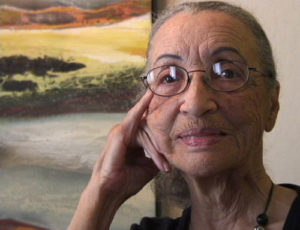
The migration of African Americans from the American South to the industrial centers of Northern California in World War II changed those who moved, along with the places they moved to. Drawn to jobs in places like the Kaiser Shipyards in Richmond, California, these migrants set down their roots in the Bay Area. In some interviews from the Rosie the Riveter / World War Two Home Front oral history project, Black “Rosies” tell about their lives in Jim Crow South, about the migration north and the hope for a better life, and about their experiences working in wartime industries and experiencing both greater opportunity but still discrimination based on race. Of the 197 Rosie project oral history, about a quarter are with African American women and men. It is likely folly to pull out one interview from this group, but I’m certain people will be interested in the story of Betty Reid Soskin, who not only worked in Richmond during the war but decades later became a ranger with the National Park Service at the Rosie the Riveter National Historic Site. Reid Soskin continues to work at the park today — at the ripe young age of 98!
One chapter in the Second World War that tragically demonstrated the enduring power of racism was the Port Chicago Disaster of 1944. The majority of the 320 killed and 340 injured in this accidental munitions explosion were African American. The eight oral histories of the Port Chicago project were recorded in the late 1970s and early 1980s by UC Berkeley scholar Robert Allen (whose life history interview we will be released this spring).
Our documentation of the African American experience in the Bay Area continues well past World War II. In a few major projects, Black East Bay residents — and their neighbors — offer accounts of not only the transformation during war but the important decades that followed. The On the Waterfront project follows several narrators through these decades. In the Oakland Army Base project, we hear from several African Americans (Charles Snipes, Cleophas Williams, Davetta Thibeaux, Ellen Wyrick-Parkinson, Elois Thornton, George Bolton, George Cobbs, Gordon Coleman, Grant Davis, Leo Robinson, Louis Harris, Margaret Gordon, Michael Thomas, Monsa Nitoto, Queen Thurston, and Robert Taylor) about their interactions with base, whether as a member of the military service, an employee of the Department of Defense, or as a resident of the nearby community of West Oakland.
The Civil Rights Movement is documented in our collection (though, admittedly, many more oral histories can be found elsewhere, such as at the Library of Congress), particularly as it
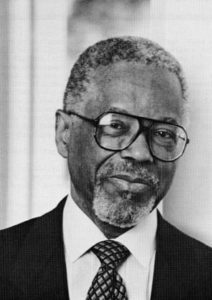
manifest in the San Francisco Bay Area in organizations that likely deserve more attention from researchers. Frances Mary Albrier was elected in the 1930s to the local Democratic Party Central Committee (and was welder during the war) and Terea Pittman became a leader of the NAACP (and many other organizations) in the earliest years of the Civil Rights Movement. The Council for Civic Unity, in addition, was established in the 1940s and was an important precursor to the California Fair Employment Practices Commission; Charles Patterson, in his interview, tells about the organization for which he was an intern before becoming a major figure in the foundation world (along with Ira DeVoyd Hall, who was a leader of the San Francisco Foundation). Orville Luster, who was interviewed in 1975, recalled his leadership of the unique Youth for Service organization which taught disadvantaged youth the skills necessary to be successful at work. And there is always a good deal of interest in the interview we hold with Ericka Huggins of the Black Panthers, which was donated to us by Fiona Thompson.
African Americans, not surprisingly, have played key roles in social justice work beyond the 1960s Civil Rights Movement. Henry Clark and Ahmadia Thomas and Carl Anthony were interviewed for their groundbreaking work in the area of environmental justice, while Michael Crawford and John Newsome were interviewed for our large project on Freedom to Marry, or the fight to win marriage equality. For our major project documenting the history of the Disability Rights and Independent Living Movements, we interviewed Chester Finn, Victor Robinson, and others.
Movement politics and protest is one way to force change, building institutions and running for elected office are other avenues pursued by African Americans we’ve interviewed over the years. I encourage you to read through two very interesting oral histories with three influential elected officials, Oakland Mayor Lionel Wilson and California State Assemblymen William Byron Rumford and Willie Brown (the second part of Brown’s oral history, covering his terms as San Francisco Mayor, will be released this spring). African Americans have made signal contributions to the law, as well: Cecil Poole, the first African American appointed as a United States Attorney in 1961, later became a distinguished federal judge; Allen Broussard rose up through the ranks of city and county courts, eventually joining the California State Supreme Court in 1981 as an associate justice; and to this day, US District Court Judge Thelton Henderson plays an outsized role in the area of law and civil rights.
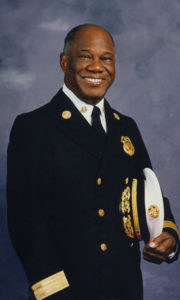
Law and politics are only two venues in which an individual can make an impact as the ethos of public service runs through many other institutional domains. Born just over 120 years ago, C.L. Dellums led a life of public service through many offices, perhaps most notably as through his decades as Vice President and then President of the Brotherhood of Sleeping Car Porters. After he had already done important work integrating the department, Robert Demmons was appointed the first African American Chief of the San Francisco Fire Department by Willie Brown in 1996. Everett Brandon might be little remembered today, but as a young man, he was a leader in San Francisco’s War on Poverty programs which brought services and employment to thousands of in the city. In recent decades, Joseph Marshall has continued the work of Brandon and others through his Omega Boys Club / Alive and Free service organization in San Francisco. The spirit of public service thrives in the private sector too. Our interviews with Ron Knox and Amanda Brown reveal how one of the largest private health care providers in the country have fought to improve health outcomes for African Americans.
The Oral History Center has long been committed to documenting our culture well beyond politics, law, and public service — we are deeply interested in the arts and the people who create them. Longtime OHC historian Caroline Crawford held an ongoing interest in documenting African American contributions to the arts, particularly music. Her interviews with Allen Smith (jazz trumpeter), Earl Watkins (jazz drummer), Gildo Mahones (jazz composer and pianist), John Handy (saxophonist, composer, and bandleader), and Jimmy McCracklin (blues singer and pianist).
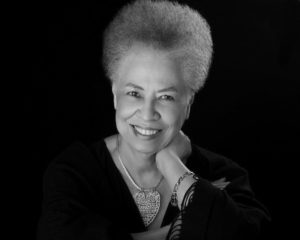
Finally, I want to bring this back around to education, as this is the root of all good things (dare I say) and I think it is essential for a university to document its role in improving society and creating new possibilities. I very much encourage you to take a deep dive into the African American Faculty and Senior Staff project, perhaps beginning with a 20 minute video we produced a few years back. This project, however, was years in the making and while we refer to this group of early faculty and staff as “the Originals,” the truth is that they weren’t the first. Our interview with Archie Williams is a true hidden gem of the collection. Williams attended Berkeley between 1935 and 1939, which was punctuated by an appearance at the infamous 1936 Olympics in Berlin at which he won a gold medal. Although too old to serve in a combat role in World War II, as a certified pilot he trained the Tuskegee airmen! He went on to a career as a respected educator. Marvin Poston was a student at Berkeley at the same time as Williams and eventually became a widely respected optometrist. In 1958, Robert Gibson was the first African American to earn a doctorate in pharmacy at UCSF, where he became a distinguished member of the faculty. Born in 1920, Emmett Rice earned his doctorate in economics at Berkeley in 1954, before being named to the Federal Reserve Board of Governors in 1979; it is worth noting that Rice’s daughter is Susan Rice, who served as UN Ambassador and National Security Advisor in the Obama Administration. A graduate of UC Berkeley and San Diego State, Del Anderson Handy had a distinguished career in education, culminating with a term as chancellor of San Francisco City College.
These oral histories represent a meaningful slice of OHC’s interviews with African Americans, but surely not the entirety of the collection. The Oral History Center encourages you to not only explore the interviews listed above, but dig even deeper into our collection, honoring the voices of those African Americans we interviewed by reading their words and absorbing their ideas and experiences.
Martin Meeker, Charles B. Faulhaber Director
Find these interviews and all our oral histories from the search feature on our home page. Search by name, keyword, and several other criteria. You can also find the projects mentioned here on our projects page.
Primary Sources: New additions to ProQuest Historical Newspapers
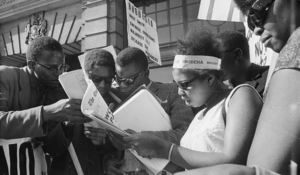 Our access to ProQuest Historical Newspapers now includes these titles:
Our access to ProQuest Historical Newspapers now includes these titles:
Pittsburgh Courier, 1911-2002
Atlanta Daily World, 1931-2003
Norfolk Journal and Guide, 1916-2003
These are cross-searchable with the other historic Black newspapers we have acquired from ProQuest:
The Baltimore Afro-American, 1893-1988
Chicago Defender, 1909-1975
Los Angeles Sentinel, 1934-2005
New York Amsterdam News, 1922-1993
Our link to ProQuest Historical Newspapers provides access to 17 newspaper databases. To limit your search to specific titles, click on Databases in the menu bar, then uncheck the titles you don’t want to include in your search.

You can also use the basic or advanced search to search all the newspaper databases, and then limit your search to specific titles using the Publication title facet that appears to the left of the results.
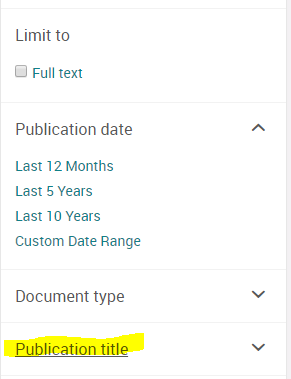
If you have questions about how to use this resource, contact Jennifer Dorner at dorner@berkeley.edu.
Trial: Atlanta Daily World and Norfolk Journal and Guide
The Library has trial access to the historical African American newspapers, Atlanta Daily World and Norfolk Journal and Guide until July 29.
The Library’s trial of Pittsburgh Courier has been extended until July 20.
Trial access: Pittsburgh Courier
 Until June 30, 2018, the Library has access to the newspaper Pittsburgh Courier in its various iterations: The Pittsburgh Courier (1911-1950), Courier (1950-1954), Pittsburgh Courier (1955-1966), and the New Pittsburgh Courier (1996-2002).
Until June 30, 2018, the Library has access to the newspaper Pittsburgh Courier in its various iterations: The Pittsburgh Courier (1911-1950), Courier (1950-1954), Pittsburgh Courier (1955-1966), and the New Pittsburgh Courier (1996-2002).
This important African-American press title was founded in 1910 by Robert Lee Vann. At first the paper focused on local interests, but later addressed the social concerns that arose due to the influx of African Americans to Pittsburgh during the Great Migration. Vann used the paper as a platform to encourage prominent African Americans to serve their community; to promote education; and to counter the “negative coverage in the mainstream press by emphasizing African American achievement.”
Source:
Muhammad, Baiyina W. “Black Press: Newspapers in Major Cities.” In Encyclopedia of African American Business, edited by Jessie Carney Smith, Millicent Lownes-Jackson, and Linda T. Wynn, 1:79–88. Westport, Conn.: Greenwood Press, 2006.
Primary Sources: Golden State Mutual Insurance Company records (UCLA)
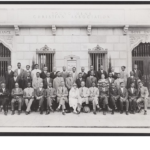 Over 2400 digitized items have been made available online at Calisphere from the Golden State Mutual Life Insurance Company records held at UCLA’s Spccial Collections in the Charles E. Young Research Library. The company was founded in 1925 in Los Angeles to provide dignified employment for African Americans and to provide them with insurance protection. The collection includes moving images, sound recordings, photographs, film strips, and slides. A finding aid for the entire collection is available at the Online Archive of California.
Over 2400 digitized items have been made available online at Calisphere from the Golden State Mutual Life Insurance Company records held at UCLA’s Spccial Collections in the Charles E. Young Research Library. The company was founded in 1925 in Los Angeles to provide dignified employment for African Americans and to provide them with insurance protection. The collection includes moving images, sound recordings, photographs, film strips, and slides. A finding aid for the entire collection is available at the Online Archive of California.
Exhibit: The Gift to Sing: Highlights of the Leon F. Litwack & Bancroft Library African American Collections
I’m sharing this announcement of Bancroft’s new exhibit:
The Bancroft Library just opened its fall/winter exhibition, The Gift to Sing: Highlights of the Leon F. Litwack & Bancroft Library African American Collections. Leon Litwack is a historian and legendary professor who taught here from 1964 to 2007. He won the Pulitzer Prize for History and the National Book Award for his 1979 book Been In the Storm So Long: The Aftermath of Slavery. He has been collecting books relating to African American history and culture since the 1940s and his collection is now perhaps the best in private hands. Ultimately, it will be coming to The Bancroft Library but highlights, along with related material from Bancroft’s collection, will be on display until February.
Highlights from Professor Litwack’s collection include Bobby Seale’s copy of The Autobiography of Malcolm X, a copy of Narrative of the Life of Frederick Douglass, an American Slave inscribed by William Lloyd Garrison and Ida B. Wells’ incredibly rare and important pamphlet on lynching, The Red Record.
Bancroft highlights include the first printing of Phillis Wheatley’s collection of poems from 1773 and early works printed in California.
The Bancroft Library Gallery is open from Monday to Friday, 10-4.
http://www.lib.berkeley.edu/libraries/bancroft-library/current-exhibits
David Faulds
Curator of Rare Books and Literary Manuscripts
Manuscripts of Slavery Collection from the XULA Library Archives & Special Collections
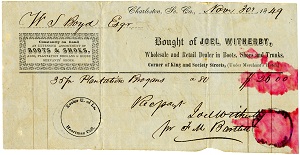 The Xavier University of Louisiana Library Archives and Special Collections is in the process of digitizing and making accessible the Charles F. Heartman Manuscripts of Slavery Collection, which includes materials dating from 1724 to 1897 relating to the social, economic, civil, and legal status of slaves and free people of color in Louisiana. Currently there are over 2,100 viewable items on the website, consisting of over 8,000 manuscript pages.
The Xavier University of Louisiana Library Archives and Special Collections is in the process of digitizing and making accessible the Charles F. Heartman Manuscripts of Slavery Collection, which includes materials dating from 1724 to 1897 relating to the social, economic, civil, and legal status of slaves and free people of color in Louisiana. Currently there are over 2,100 viewable items on the website, consisting of over 8,000 manuscript pages.
According to the collection guide, “approximately half of the Charles F. Heartman collection consists of municipal records from city of New Orleans. Clerical books, especially those of the Third Municipality, provide valuable information on the labor and leisure activities of slaves in the early nineteenth century. The city also had the largest concentration of Free People of Color in the nation, and encompassing tax records and business bonds reflect their economic activity. There are also rosters of Negro soldiers in the U.S. Army during the Civil War, and records of societies of Freemen dating from Reconstruction and beyond.” The collection includes records in French, English, and Spanish.
Primary Sources: Independent Voices
Independent Voices is a digital collection of magazines, journals, newspapers, and newsletters housed in the alternative and small press archives of participating libraries and historical institutions.
The focus is on materials published during the 1960s-1980s that stem primarily from the second wave of feminism, LGBT activism, GI and student protest movements, and the Black, Chicano(a), and Native American movements.